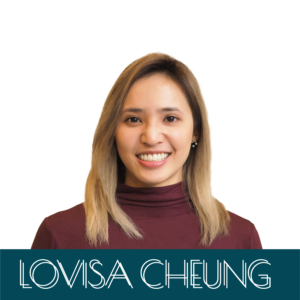Shovelling snow can be a workout in itself! This is especially true when there is a heavy snowfall or if you do not exercise regularly. The sudden increase in physical activity from shovelling can lead to injury if you do not have good form, if you do too much too soon, or if you do not use the right equipment. Being mindful of how to prevent injury while shovelling can ensure you stay safe this winter season.
Like with any type of exercise, there is good form and there is bad form. Make sure you shovel with proper body mechanics by practicing the following five cues:
– Keep one hand on the shovel and one hand close to the blade
– Keep your back straight
– Bend at your hips, NOT at your back
– Keep your stance wide
– Face your feet towards the shovel
There are many ways to ensure you prevent injury while shovelling, whether that be making modifications to your environment, your equipment, or your body. Following these next 8 tips will set you up for success this winter.
- Warm up your muscles by doing a brisk walk, marching in place, or any other full-body activity; this ensures your muscles, joints, and body are ready for exertion.
- Perform stretches to your shoulders, back, and legs before you begin shovelling, and after shovelling if needed.
- Drink water, plenty of it!
- Apply a heat pack on your back or upper shoulders after shovelling to release the tension from your upper body.
- Practice safe body mechanics by following the 5 cues mentioned above. Lift with your hips and knees, not your back or shoulders. Try not to twist with your back, but rather pivot with your legs and feet.
- Do not overfill your shovel, especially if you are lifting the snow; this makes for a heavy lift that can cause injury.
- Stop immediately and get emergency assistance if you feel stress on your body (i.e. dizziness, lightheadedness, chest pain, sudden difficulty breathing).
- Push the snow as close as possible to where you want to put it, then lift.
- Leave the snow in a pile if you do not need to lift it. Doing so will help you conserve energy, minimize fatigue, and reduce injury risk.
- Shovel early, especially during large snow falls. Doing so will ensure that you tackle your driveway and walkways before the snow piles up and gets too heavy.
- Shovel frequently throughout the day, instead of letting the snow pile up at the end of the day and having to shovel a lot at once.
- Take a break after shovelling one section of snow before moving onto the next area to shovel. Giving yourself time to rest between bouts of shovelling will help minimize your injury risk.
- Get help with snow shovelling duties by reaching out to other members of your household, friends, or family for assistance.
- Invest in a snow blower if you have a large driveway, have a medical condition, or are elderly.
- Wear plenty of layers, a hat, and a scarf in order to stay warm and work up a sweat. Doing so will also help keep your muscles warm and in good condition for exertion.
- Wear warm gloves or mittens to protect your hands against frostbite.
- Wear boots to protect your toes against frostbite.
- Wear boots that have adequate traction on the soles in order to prevent slips and falls, especially as conditions get icy.
- Use shoe grippers or spikes on your boots to enhance traction and minimize your risk of slips and falls. This will be especially useful if conditions are icy, windy, or dark.
- Use salt to dissolve ice and increase traction between your shoes and the ground.
- Turn on the outdoor lights or use a head-lamp if it’s dark outside. Doing so will help increase your visibility and reduce your risk of tripping, falling, or slipping.
The type of shovel you use will also influence your body mechanics and apply varying stresses to your body. Keep in mind that different shovels exist for different purposes, so remember to use the right one!
- Standard shovels are designed for both pushing and lifting snow.
- Ergonomic shovels have a curved handle that allows for better positioning during shovelling. This type of shovel allows for minimal bending at the back and may be helpful in preventing injury.
- Pushers have a wide-blade and meant to push, NOT lift the snow.
- Scoopers have a short handle and are meant to lift, NOT push the snow.
In Summary…
A little goes a long way! By intentionally setting up yourself and your environment in preparation for physical exertion in the cold, you can make a significant difference in your health and safety this winter season. Remember to:
- Warm-up and stretch your muscles.
- Use proper shovelling technique.
- Push rather than lift the snow.
- Pace yourself.
- Get assistance with snow shovelling duties.
- Dress wisely.
- Avoid slips and falls.
- Use the right shovel.
If you have experienced an injury or have pain from your snow shovelling duties this winter, please give our clinic a call and book an appointment to see our amazing therapists. Our team provides services including physiotherapy, chiropractics, and massage therapy, and we are happy to help you stay safe and injury-free this season!
Additional Resources
For more information, please check out the following links:
Winter Safety Tips: www.toronto.ca
Types of Shovels:
About The Author
Hi there! My name is Lovisa Cheung and I am a resident physiotherapist at Health Bound Health Network.
At Health Bound, I work with individuals with varying conditions and provide personalized treatments using a holistic approach. My philosophy is to empower patients to engage actively in their therapy and walk with them throughout their journey of recovery. In addition to being a part of the team at Health Bound, I am pursuing my PhD in Rehabilitation Sciences at the University of Toronto. My passion lies in spinal cord injury and how recovery and quality of life can be maximized in these individuals post-injury. My goal is to bridge the gap between research and clinical practice, and to provide patients with the most up-to-date evidence-based practice.
Hope you enjoyed this blog! Please stay tuned on our social media for more interesting content!








